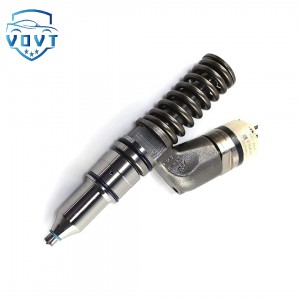As rail pressure levels in modern high-pressure common-rail (HPCR) systems continue to rise, injector nozzles are subjected to increasingly harsh hydraulic and mechanical conditions. The nozzle, acting as the final and most critical element of the fuel injection system, directly determines injection accuracy, atomization quality, and combustion efficiency. Therefore, optimizing the compatibility between nozzle structural parameters and different rail pressures is essential for ensuring reliable performance across a wide range of engine operating conditions.
Different rail pressure levels significantly alter the internal flow characteristics of the nozzle. Under low-pressure conditions, fuel velocity is relatively moderate, and the pressure distribution within the hole entrance remains stable with limited cavitation. Spray penetration and cone angle are highly sensitive to geometric variations. As the rail pressure increases to 180–250 MPa, the internal flow accelerates dramatically, promoting stronger cavitation development and more pronounced turbulence near the inlet region. While controlled cavitation may enhance atomization, excessive or unstable cavitation can lead to asymmetric spray breakup, wall impingement, and severe cavitation erosion of the orifice. When rail pressure exceeds 300 MPa, cyclic hydraulic loading and intense velocity gradients impose substantial stress on nozzle materials, making structural strength and fatigue resistance critical design requirements.
Geometric parameters of the nozzle play a decisive role in achieving compatibility across different pressures. Increasing the inlet rounding radius reduces sharp pressure gradients and helps suppress unwanted cavitation under ultra-high pressure conditions. Adjusting the length-to-diameter (L/D) ratio enables a balance between adequate penetration at low pressure and controlled spray dispersion at high pressure. Optimizing sac volume and contour can improve fuel distribution uniformity, reducing injection quantity variation across cycles. Additionally, the number of holes and their angular arrangement influence spray symmetry and the stability of the cone angle when rail pressure fluctuates.
Material adaptability is another crucial factor. Traditional high-speed steels may develop micro-fatigue cracks when subjected to prolonged high-pressure cycling. Advanced coatings such as DLC, TiN, or ceramic-based nanoscale layers significantly enhance resistance to cavitation erosion and boundary wear. High-strength corrosion-resistant alloys further improve long-term structural stability, especially in engines operating with extended rail pressure ranges.
By integrating CFD simulations, surface durability tests, and high-speed spray visualization, a multi-objective optimization framework can be developed. Such a framework identifies nozzle designs that minimize pressure losses, stabilize cavitation behavior, and maintain consistent spray morphology across varying rail pressures. The resulting design guidelines enable enhanced fuel-air mixing, reduced emissions, and improved injector durability.
Overall, optimizing nozzle compatibility with varying rail pressures is essential for the next generation of HPCR systems. This research provides theoretical insights and practical engineering strategies for ensuring stable, efficient, and durable nozzle performance under modern high-pressure injection requirements.



















